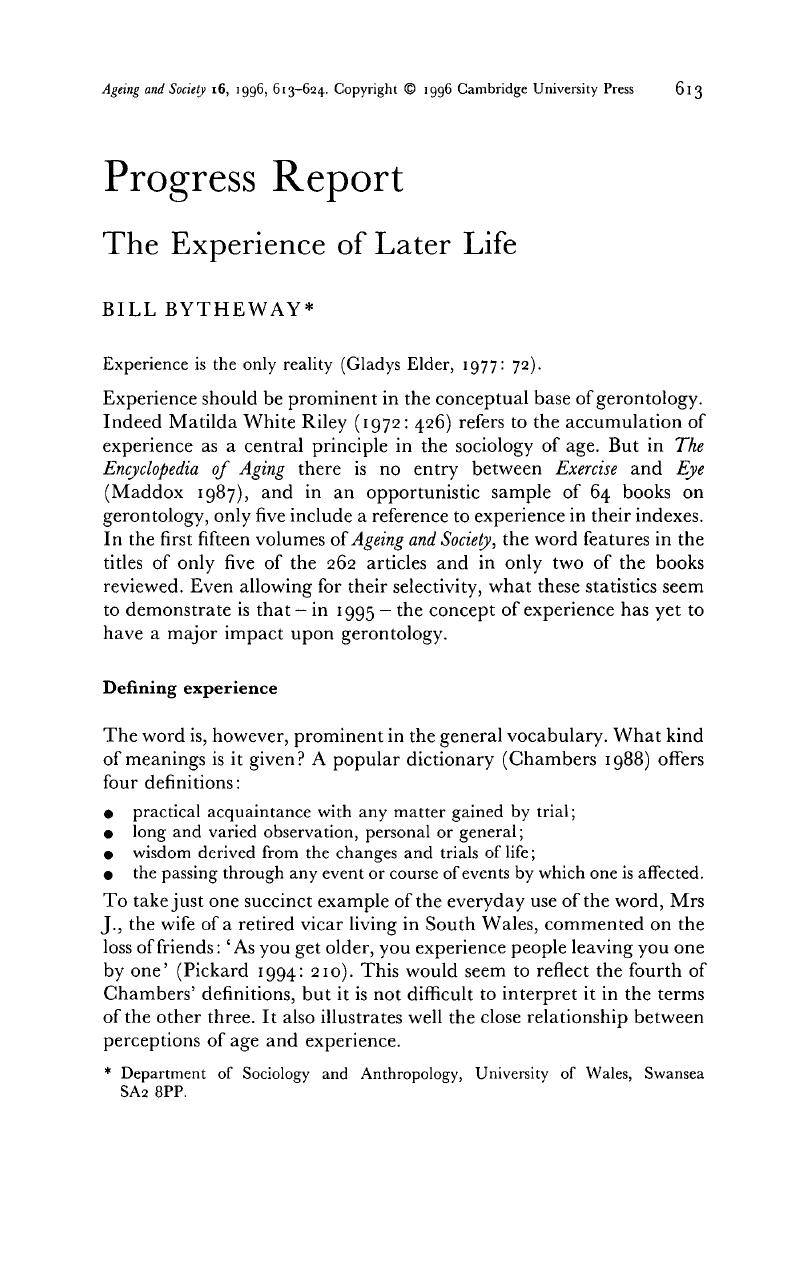Crossref Citations
This article has been cited by the following publications. This list is generated based on data provided by Crossref.
Clarke, Amanda
Jane Hanson, Elizabeth
and
Ross, Helen
2003.
Seeing the person behind the patient: enhancing the care of older people using a biographical approach.
Journal of Clinical Nursing,
Vol. 12,
Issue. 5,
p.
697.
Stathi, Aphrodite
McKenna, James
and
Fox, Kenneth R
2004.
The experiences of older people participating in exercise referral schemes.
Journal of the Royal Society for the Promotion of Health,
Vol. 124,
Issue. 1,
p.
18.
Clarke, Amanda
and
Warren, Lorna
2006.
Growing older—the good, the bad and the ugly: Subjective views of aging.
International Journal on Disability and Human Development,
Vol. 5,
Issue. 1,
BYTHEWAY, BILL
2009.
Writing about age, birthdays and the passage of time.
Ageing and Society,
Vol. 29,
Issue. 6,
p.
883.
McInnes, Alison
2022.
Navigating the choppy waters to Nirvana: A critical reflective account of caring for ageing parents in the fourth age.
Ageing and Society,
Vol. 42,
Issue. 10,
p.
2227.
Robinson, Peter
2023.
How Gay Men Prepare for Death.
p.
61.



